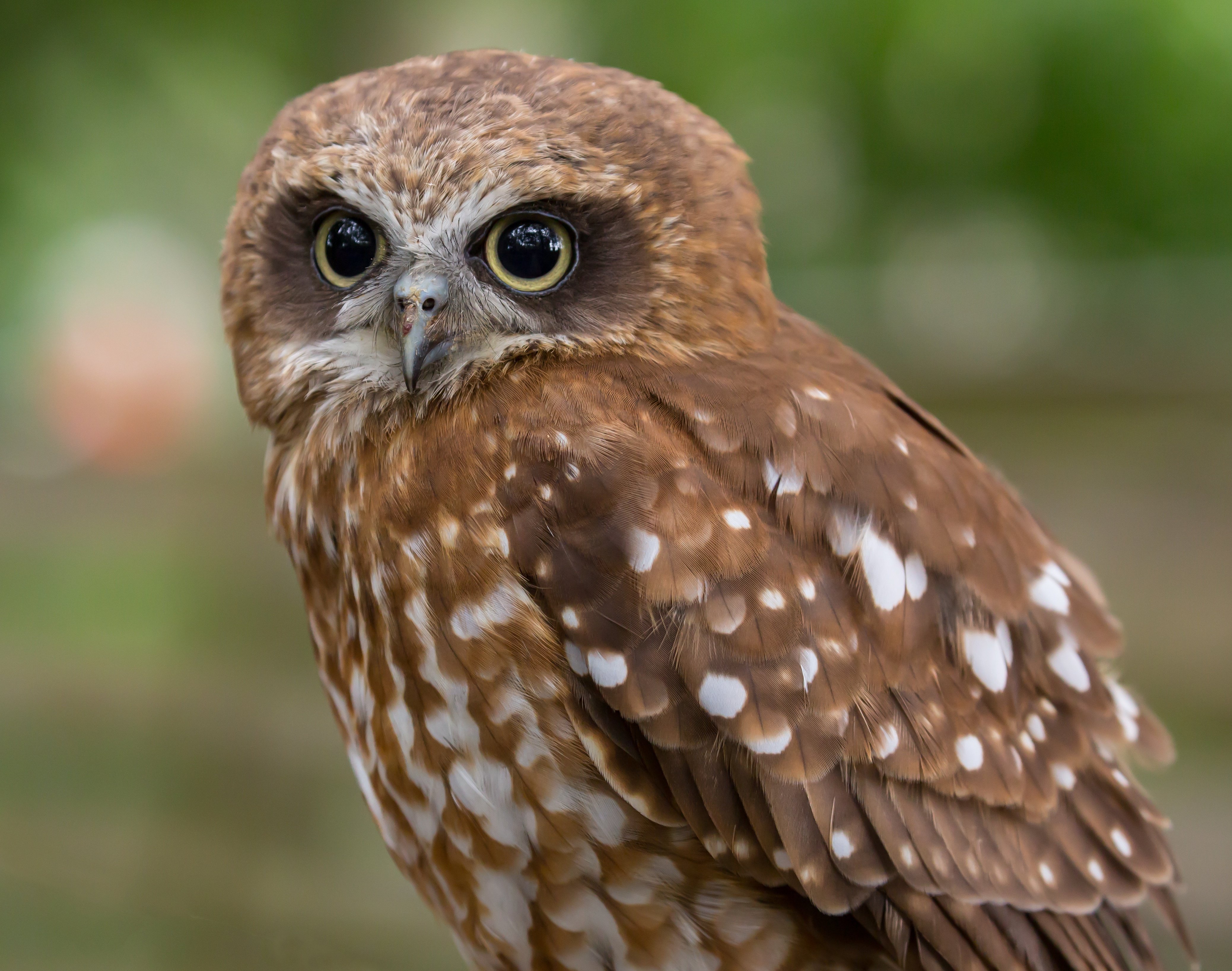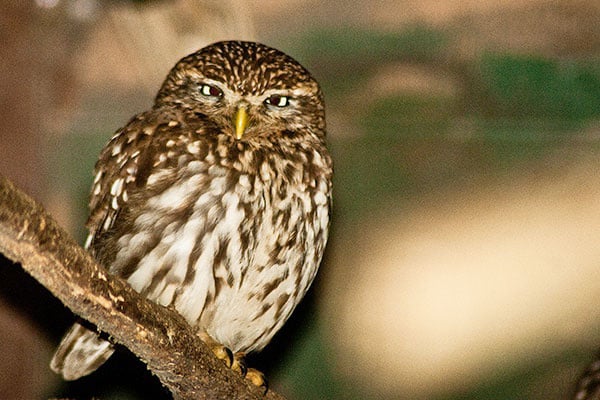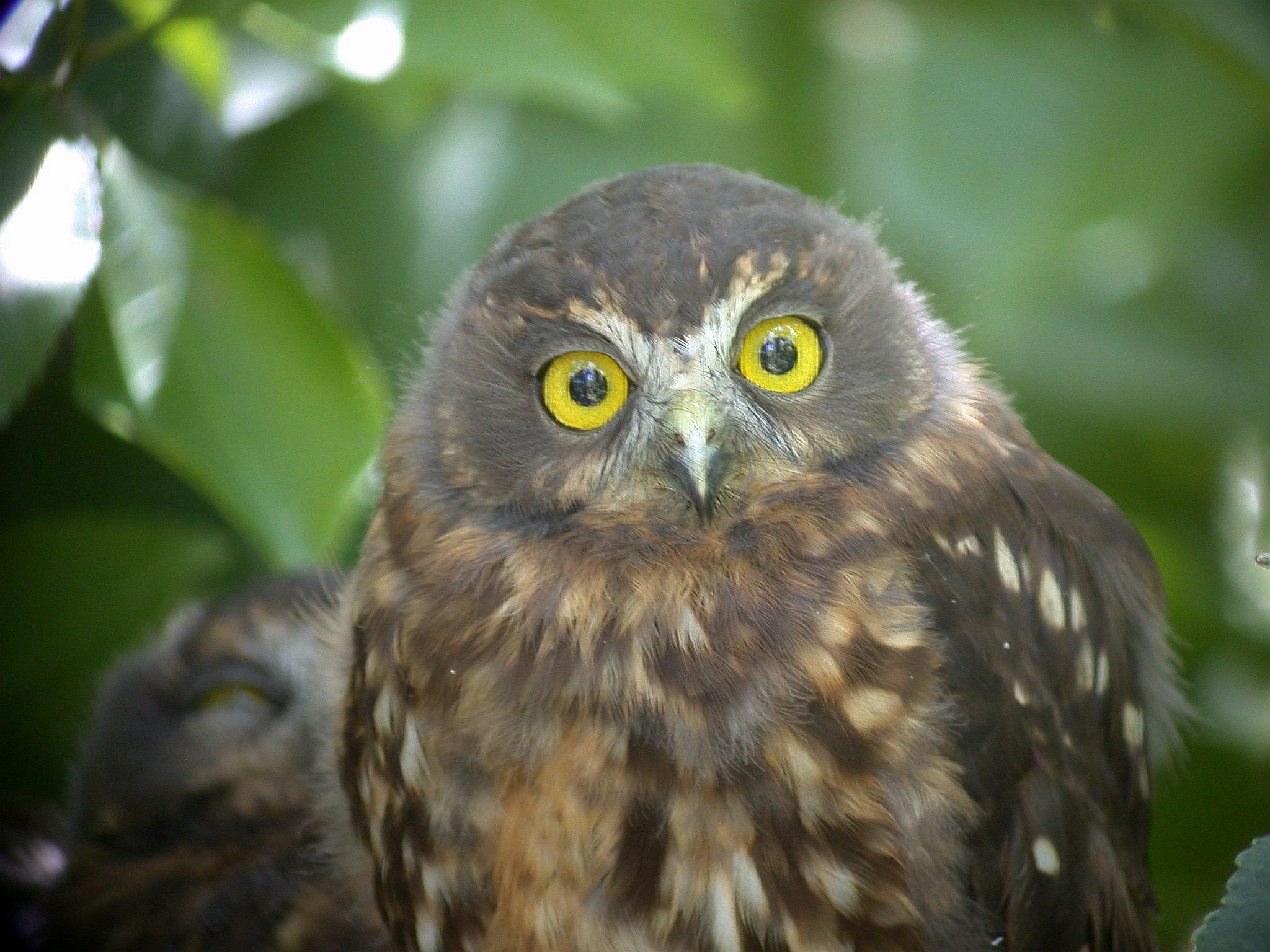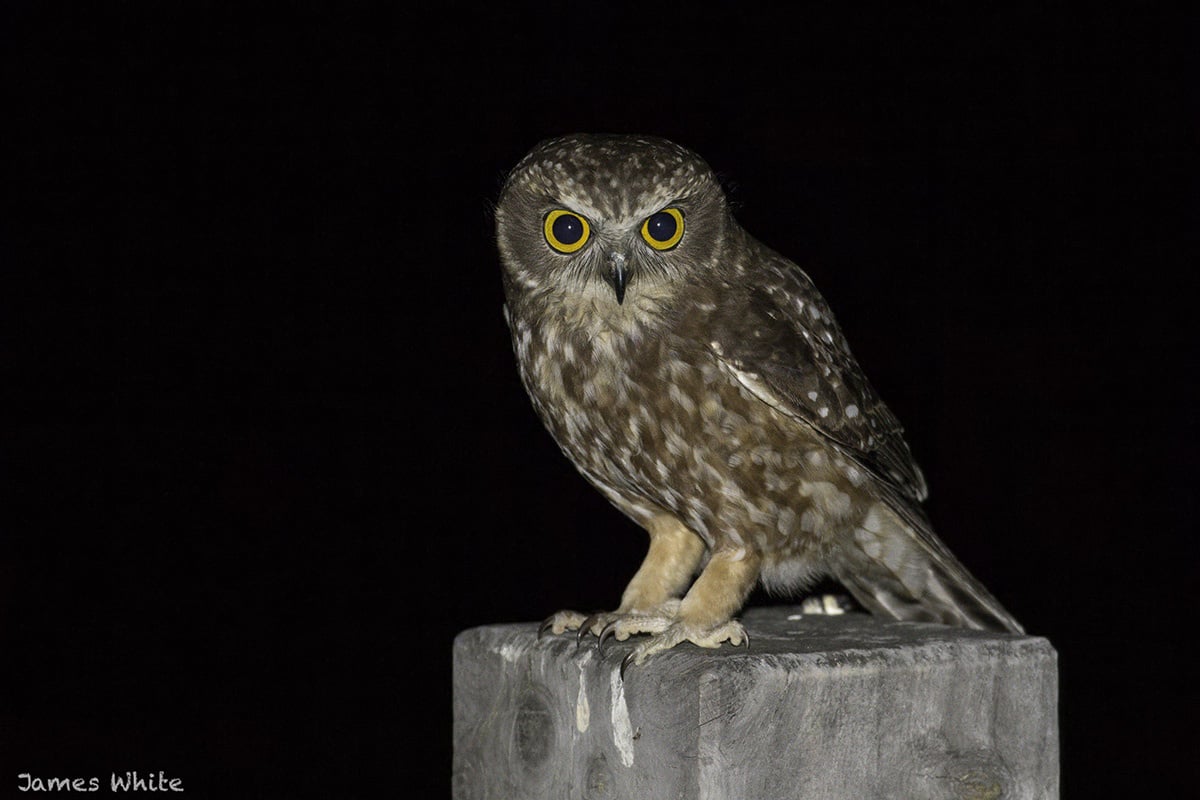Photo by Hayden Wood
Taken in the photographer’s shed.
The Morepork seems to be caught in the middle of battle between man and rat. NZ wants to poison the Pacific Rat (kiore), and there have been air drops of massive amounts of poison. The poison does kill huge amounts of the rats, but about 95% of owl pellets have the rats in them, so owls consume the poison rats and die.
On the other hand, NZ had no native terrestrial mammals, since New Zealand was already far off in the ocean before any mammals existed. Due to this, the owls never evolved a defense against rats, so the rats eat a number of baby owls or owl eggs.
The government argues this is still a net benefit for the native wildlife, but as these poisoning efforts seem to not work completely, letting the rat populations bounce back, it seems local animals are killed by the poison and the rats.
The Maori people also do not seem to want the rats killed off. They have cultural importance to them, and it seems they purposely brought them to New Zealand in their boats.
Conservation in New Zealand sounds like a difficult job!
If any locals can add some insight, that would be great. It seems there are many conflicting perspectives on this matter. I know in the US poisoning can be a big issue to our raptors. Even bald eagles succumb to the collected poison in their systems. New Zealand seems extra vulnerable though, due to animals not having a natural defense to these types of animals.
This got a little more intense than I intended, so I’ll add some more pics of cute owls in the comments!
I’m lucky enough to have Ruru in my back garden. While I rarely, if ever, see them I do often hear them gently hooting throughout the night, and I love them for that.
I’m way under qualified to comment on the efficacy of the rat poison drops, but my impression is that they are generally seen as a necessary evil in the fight to protect native wildlife. There’s definitely a fringe, but vocal, anti 1080 (the most prominent poison used) movement, but that’s less rooted in environmental concern and more on conspiracy theories: 1080 activism: Going down the conspiracy ‘wormhole’
It is worth noting that poison drops aren’t the only tool employed. There’s been some massive victories in the Wellington region using trapping to eliminate rats (and other pests such as stoats) from a large area of the capital: Rats, stoats and weasels eliminated from Miramar
There’s a good Tom Scott video on the efforts going on to remove rats from the Wellington region: This is “impossible”, but New Zealand is trying anyway
I’d be remiss if I didn’t also mention Zealandia when talking about the return of native birds to the capital. It’s large sanctuary in the city suburbs that’s completely surround by a 1.8 - 2.2m (6.2 - 7.2 ') predator exclusion fence. This area allows native birds a space to thrive without rat predation. It’s been so successful that threatened birds are growing in numbers and returning to areas outside of the sanctuary - good example being the Kaka (not an owl but still superb) which seem to growing steadily in number in my area.
Nice! I’ve read about Australia doing the same with endangered animals there too. They seemed to have a cooperative operation going on with the native people there, which sounded great too having them involved.
You guys have so many cool animals. I always thought Madagascar was supposed to have the most unique creatures, but the more you guys are teaching me about NZ and Australia, you guys have a lot of wild stuff!
@happy_piwakawaka I want to second this about the anti 1080 crowd being conspiracy theorists and anti-science.
It does seem like @anon6789 must have stumbled onto one of their pages or something.
Exactly what happened it seems. 😓
Thank you, this is definitely the stuff I’m looking for! Anything that can point me in a direction to read about is a huge help.
I feel we get very little non-US news, so it’s not easy for me to find places to jump start my researh on niche topics in the other side of the world. I’ll check out all those links. Appreciate it!
Thank you both for your corrections and good sources.
Lovely to see a ruru in here! - I’m not sure where you got some of that information though. Ruru are one of the species we protect with 1080.
NZ wants to poison the Pacific Rat (kiore)
Not quite. New Zealand mainly wants to poison the Black Rat Rattus rattus and the Norway Rat R. norvegicus. Those are the main problems.
We don’t mind killing kiore - but they are uncommon, arrived several hundred years earlier than the other two, and only found around the lower part of the South Island and a few tiny offshore islands.
The government
I think it’s worth pointing out that every major conservation NGO in New Zealand also support the use of 1080 in areas where manual trapping alone is not practical. The owls themselves benefit from this as rats eat their eggs. Here is what our largest bird NGO, Forest & Bird, has to say on the subject.
Theoretically Ruru can be poisoned by eating a corpse, however the science supports that 1080 does not have a negative effect on their numbers. One conservation scientist even used Ruru calls to check numbers before and after.
The Maori people
One in six New Zealanders is Maori so that’s an exaggeration as many different views are held. But one particular tribe, Ngatiwai (up to 10,000 people) wants to save kiore. For this reason there is a kiore rat sanctuary on an offshore island so that they can keep their rats without them bothering the rest of NZ.
but about 95% of owl pellets have the rats in them
I was scratching my head over this stat, given that most Ruru have no access to kiore whatsoever. Ruru were here long before rats! They eat a lot of insects, birds, and lizards, but will eat mice and small rats - they are too little themselves to take on a full sized black rat. This is why the new Barn Owl - which does mostly eat rodents - isn’t seen as a threat to the Ruru: they are not competing for its main food sources.
I think what must have happened is an anti-1080 person got this stat from the actual kiore sanctuary - this story says 95% of Ruru out there eat them and distorted it somehow.
That last article you linked is exactly where I saw a lot of that info. This really highlights some of the pitfalls of “doing your own research.”
Having access to info and having context aren’t the same thing. I don’t know the name of a single legit source of NZ news. The article looked well written and the website looked like a legit conservation website. With US news I have enough experience to know what to trust, such as NY Times vs New York Post, but not with outside news. And then as with “is the kiore important to Maori” I can find facts to support that, strengthening confirmation bias.
I’m also shocked to learn there are that many Maori. Our native people make up less than 3 percent of our population. I don’t think we ever talked about Maori in school. I remember for a while stealing their safety style for tattoos was common, and that was probably my first exposure to who they are.
I can definitely see the training behind the poison and how it can be beneficial, and that’s why I was hoping someone who lived there could fill me in better. You and the other commenter have given me much to look into. I appreciate you both correcting me in a nice way. I’m sure it’s difficult having to correct so many people online.
That last article is a legitimate website, I think perhaps you just misunderstood what it was saying. In fact so did I slightly, because re-reading it I see they were trying to eradicate kiore from one of the Hen and Chickens while protecting them on another two.
But the Hen and Chickens is just tiny, 5 square miles altogether with no human habitation, and unique ecology, conditions there are not representative of the mainland at all. So I guess that’s the context you were missing.
Kiore used to be a prized food. The fact that some Maori consider kiore a taonga (valuable treasure) is enough to get them protected on those two little islands, but to my knowledge no one has ever advocated just letting them eat all the native birds (which are also important to many Maori).
And don’t worry, it’s a common misconception in the Northern hemisphere that Maori are a tiny minority and/or live separately in “tribal villages” or something. In reality there are Maori in government, in the civil service, in the NGOs etc, all of whom have input in these kinds of decisions.
Thank you again for all of this. There is so much for me to learn about all this. I find it fascinating.

Photo by Walter De’ath

Photo by Tezza

Photo by GlosterBirder

Photo by James White
Caption says this is a Tasmanian Morepork, which I think is technically incorrect these days. There has been much debate, but I think the latest genetic testing has the Morepork separate from the Australian and Tasmanian Boobooks, but the Tasmanian is much closer to the NZ Morepork.
deleted by creator



